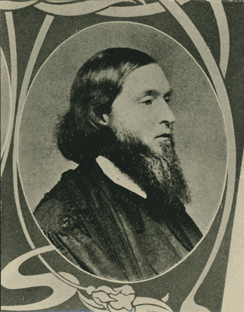History Detectives: Sorting the Evidence
 The Rev. Joshua YoungFinding a bloody handkerchief next to a murder victim is very different from finding one in the rest room of a travel stop, where someone might have paused to deal with a bloody nose.
The Rev. Joshua YoungFinding a bloody handkerchief next to a murder victim is very different from finding one in the rest room of a travel stop, where someone might have paused to deal with a bloody nose.In the same way, evidence in the files of Underground Railroad history has to be checked against its surroundings, and against other nearby evidence. A perfect example comes from mentions of the Rev. Joshua Young, who became a minister at the Unitarian church in Burlington, Vermont, in 1852. Noted for his anti-slavery views, he is quoted as having said that "every sea-port was a station" for the Underground Railroad in New England -- and that may reflect most of all his experience BEFORE coming to Burlington, when he served in Boston (ordained there in 1849; the New York Times mentioned this date in Young's 1904 obituary). In Vermont, he had a "troubled ministry, and the controversy over his views on slavery compelled him to resign," says the current history of Burlington's Unitarian Universalist church. But before he did so, he became famous in 1859 as the minister who presided over the funeral of African American rebel John Brown, after Brown was hanged for leading a raid at Harper's Ferry, West Virginia. No wonder people connected him then, and connect him still, with abolitionist groups and the Underground Railroad!
But how often, in Burlington, Vermont, did this minister shelter fugitives? Recorded numbers of African Americans passing through the area are relatively small. The most quoted source for Vermont Underground Railroad statistics, the work of Joseph Siebert, has been largely discredited. And Jane Williamson, director of Rokeby, Vermont's Underground Railroad museum and former home of the Robinson family, suggests that the politics of Burlington at the time -- heavily dominated by South-favoring "Democrats" (the political parties were different then!) -- would have made the town a less likely area for active assistance to fugitives.
One letter quoted by the North Country Underground Railroad Historical Association, written by a Rhode Island Quaker, Elizabeth Buffum Chace, includes her recollections as she looked back in the year 1891, and she mentioned the Rev. Young as being part of the "Vermont road" for fugitives.
How old was she when she wrote that letter? Could she have mixed up the Rev. Young's Boston role with his Vermont role? Could she be thinking of one fugitive, rather than a pattern of fugitives?
A good challenge for history detectives: Find out everything possible about Mrs. Chace and about Burlington in the 1850s and weight the evidence, as Shawna and Thea do for "North Upton" in the book The Secret Room. Do the same for your own town -- I'm especially interested in hearing about any place where Quakers were known to live in the 1800s. Let me know what you find out, would you please?
Published on April 26, 2011 15:17
No comments have been added yet.



